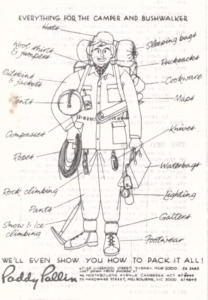The topic at the recent Bushwalking NSW AGM was ‘How to grow your club’, providing an insight into how one club substantially grew from 50 members to over 300 over a period of a few years. Some of their ideas are paraphrased below. For more information and suggestions on club management see http://www.bushwalkingnsw.org.au/club-management/
You can listen to the audio which inspired this post. (Works on Chrome and Firefox. Apologies for the rough recording – with patience you will hear the gems buried within!).
Soft management
Allow the committee to handle the running of the club, rather than having boring and contentious general meetings where members wrestle over every last detail of its operation. Reserve member’s meetings for socializing, educating, talks and slide nights etc. Give the committee the authority under the club’s constitution to handle the day to day affairs of the club, including making decisions, finances, policies and procedures.
Focus on activities- not committee meetings. The committee should meet the absolute minimum times per year that is needed to organise the club program and fulfill its legal requirements. Under new Incorporated Associations law it is permissible to hold electronic meetings e.g. Skype, conference calls and committee voting by email.
Design the committee structure around roles. Don’t have inactive ‘ordinary’ committee members. Each committee member should have a defined purpose and role. You may need to change the constitution to do this.
Ensure that committee members change regularly by limiting the number of times a member can stand for a particular role. This prevents stagnation and burnout and brings fresh ideas onto the committee agenda.
Make it easy to participate
Clarify processes and procedures and document them so that others know what they should do and how to do it. e.g. how to join, how to become a leader, how to arrange an activity.
Remove obstacles from member and visitor participation e.g. paperwork.
Put your documentation and programs on your website so that everyone can access the information.
If members show an interest in a particular activity or idea or have a suggestion to make, ask them to lead the activity or implement the idea.
Don’t wait for people to volunteer; ask them to do something and give them assistance to carry it out. e.g. buddy potential leaders.
Feature program changes and late-notice activities on the website and encourage members to check it regularly.
Promote the club
Give members club business cards to hand out to interested parties, rather than bulky, old-fashioned leaflets.
Ensure the club website has a current design and feel and is easy to navigate.
Make visitors feel welcome and ask them to return.
Don’t get hung-up about age
Understand your Target Audience. Some clubs are youth oriented, such as university bushwalking clubs, some have all age groups in their membership, while others are composed of 50+. Don’t worry that your club has no members under 50 years old. People’s lives have a natural cycle. After they have had children and the demands of raising a family are most over, then they will start to look for new activities as they enter their fifties. Target these people for membership. The most important point is that you cater to their needs and continue to attract new members in that age group.
It is natural to have a turnover of membership or around 15-20% annually, so don’t worry when people resign. It is more important that you replace departing members.
Members don’t have to be locals. Having intercity, interstate or international members can open possibilities for club holiday activities utilising local knowledge.
The program
A diverse program, with a broad range of activity types and grades, will attract a diverse range of members, increase membership and increase activity participation.
Consider posting your program on the website so that both members and potential visitors can see the latest activities on offer.
Most clubs now email the program rather than printing and posting. Consider offering a monthly emailed program instead of the traditional quarterly. This means the Program Secretary’s duties are spread evenly across the year rather than clustered in a couple of months. It also means leaders don’t have to commit to an activity 4-5 months in advance, Late notice activities can be easily added to the website or sent out as an email alert.
Be social
Joining a bushwalking club is not just about outdoor activities. It is also about socialising. It’s okay for a bushwalking club to run purely social events with no walking involved. Create opportunities in the program for members to socialise, such as; planning for coffee at the end of a bushwalk, restaurant nights, attending fun events. The result will be increased group cohesion, increased membership, a spirit of volunteerism and higher participation in bushwalks.



 Some of you may remember that in 2013 BNSW held a Presidents Meeting to brainstorm ideas on promoting and running bushwalking clubs. I voiced an opinion that although the Confederation website had been great when it started, that it no longer met the needs of the organisation and we needed a new modern website. I was therefore gratified when the committee set aside some money and commissioned David Morrison to project manage a new website in February 2014. David called for volunteers to help write the content and since I had been so vocal about the website, I felt I should volunteer my writing skills for the project.
Some of you may remember that in 2013 BNSW held a Presidents Meeting to brainstorm ideas on promoting and running bushwalking clubs. I voiced an opinion that although the Confederation website had been great when it started, that it no longer met the needs of the organisation and we needed a new modern website. I was therefore gratified when the committee set aside some money and commissioned David Morrison to project manage a new website in February 2014. David called for volunteers to help write the content and since I had been so vocal about the website, I felt I should volunteer my writing skills for the project.


